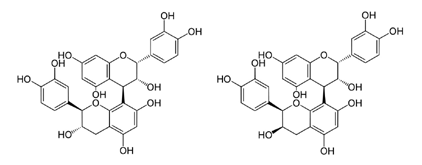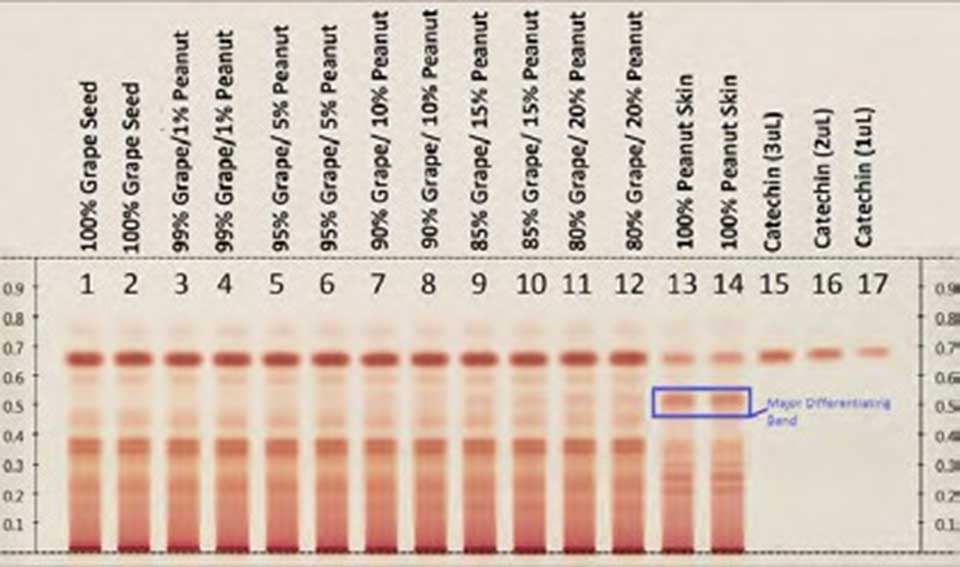Grape seed extract Adulteration: do consumers know?
Vitis vinifera L. (fam. Vitaceae) grape seed extract (GSE) is rich in numerous healty and nutritive dietary polyphenols. These compounds include proanthocyanidins (PACs), oligomeric proanthocyanidins (OPCs) and isomeric mixture of (±)-catechin and (±)-epicatechin monomers. There are two classes of PACs: A-type and B-type, the first is not found in GSE whereas the second is usually reported (Fig.1) (1).

Fig.1:
Chemical structures of the predominant proanthocyanidins in GSE: Procyanidin B1 and Procyanidin B2.
Adulteration and safety issues
A known adulterant of GSE is the peanut (Arachis hypogaea L., Fabaceae) skin extract, composed principally of A-type PACs with negligible quantities of the monomers. Adulteration of Grape seed extract appears to be a serious problem since the use of peanut skin extract represents a significant safety concern due to the possibility of reactions to peanut allergens. Distributors that unknowingly buy adulterated products and perform inadequate quality control tests are beeing defrauded.
Moreover, they expose themselves at risk of regulatory actions due to not-compliance with GMP requirements of their products. Peanut skins are much less expensive than grape seeds. Thus, the sale of adulterated extracts has a negative impact on the market because producing authentic grape seed extract cannot be competitive with adulterated low-cost products which are preferred by consumers who usually make price-oriented purchasing.
Methods to detect adulteration
The main reason why adulteration goes undetected is due to manufacturers relying on spectrophotometric methods. This kind of quality control is not specific enough to discriminate between grape seed PACs and PACs from other plants.
High-performance thin-layer chromatography (HPTLC) and high-performance liquid chromatography (HPLC) coupled with ultraviolet and mass spectrometric detection (HPLC-UV/MS) allow to obtain a chemical fingerprint of grape seed and peanut skin extract and to and to distinguish between the two. HPTLC analysis of authentic GSE (lanes 1-2), mixtures of GSE and peanut skin extract (lanes 3-12), authentic peanut skin extract (lanes 13-14), and the standard compound catechin (lane 15).
REFERENCES
- T.S. Villani, W. Reichert et al. Chemical investigation of commercial grape seed derived products to assess quality and detect adulteration. 2015. Food Chemistry 170: 271–280
- S.Kupina, S. Gafner. Grape seed extract -Botanical Adulterants Bulletin. 2016. www.botanicaladulterants.org

